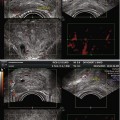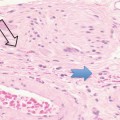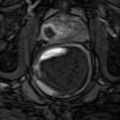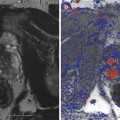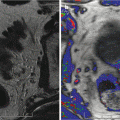Risk group
N
Ten-year cancer-specific survival (%)
Ten-year metastases-free survival (%)
Ganzer et al.
Low
229
100
99.6
Intermediate
211
96.2
94.3
Thuroff et al.
All localized (72 % Int or high)
704
99
95
Crouzet et al.
Low
357
99
99
Intermediate
452
98
95
High
174
92
86
Ganzer et al. (2013) reported a retrospective single-center study of 538 consecutive patients undergoing primary HIFU for clinically localized prostate cancer and followed over a 14-year period. Measures of efficacy included overall, metastasis-free, and prostate cancer-specific survival rates. Morbidity was also assessed. Per D’Amico stratification, patients included 229 men with low-risk disease and 211 men with moderate-risk disease. On average, 1.22 HIFU sessions were performed per patient. For the low- and intermediate-risk groups, 10-year cancer-specific survival was 100 and 96.2 %, and metastasis-free rate was 99.6 and 94.3 %, respectively. No rectal fistulae were observed following first HIFU and 4 (0.7 %) were observed following repeat HIFU. Post-HIFU urinary tract infection (UTI) was observed in 10 % of patients, with 28.3 % having an episode of bladder outlet obstruction. At most recent follow-up, grade I incontinence (defined as loss of urine under heavy exercise requiring 0–1 pad per day) was observed in 14 % of subjects and grade II and III was reported by 2.4 and 0.7 % of patients, respectively. Potency was assessed 12 months following HIFU. Of men potent prior to HIFU, 65 % resumed intercourse following HIFU, including 25 % without and 40 % with oral pharmaceutical assistance (Viagra) (Note: in North America, standard potency reporting includes men potent with or without oral pharmaceutical assistance).
Thuroff and Chaussy (2013) from Munich, Germany, reported long-term cancer control and morbidity of HIFU; in their study, transurethral resection of prostate (TURP) was performed to downsize the prostate prior to HIFU. Patients underwent primary HIFU for localized disease (T1-2, N0, M0, PSA <50 ng/ml) and were followed prospectively in their database. Patients with shorter follow-up (<15 months), locally advanced prostate cancer, and previous long-term androgen deprivation or any PSA-influencing therapy were excluded. All patients underwent whole-gland HIFU. Of 704 study patients, 78.5 % had intermediate- or high-risk disease. Follow-up was up to 14 years. Ten-year cancer-specific survival was 99 %, metastasis-free survival was 95 %, and 10-year salvage treatment-free rates were 98 % in low-risk, 72 % in intermediate-risk, and 68 % in high-risk patients. Side effects were moderate. HIFU re-treatment rate was 15 % since 2005.
Morbidity was assessed and stratified according to the generation of device used: Cohort 1: prototype device; Cohort 2: Maxis device (the first commercially available device launched in 2000) and Cohort 3: Ablatherm Integrated Imaging device (became available in 2005). Perioperative complications (Clavien classification) occurred in 16 % of the entire sample, with a decrease over time noted between Cohorts 1, 2, and 3 (29 %/10 %/14 %). No perioperative complication was severe, all were short-lasting, and no Clavien IV or V complications were observed. Short-intermediate term morbidity included incontinence (4 %), obstruction (4.6 %), infection (2.1 %), rectourethral fistula (0.23 %), perineal pain (0.7 %), and others (4.4 %). No patient developed a fistula since 2005 when the Ablatherm Integrated Imaging was introduced. The morbidity profile, but not the overall rate, changed significantly in the recent cohorts. Overall rate of urinary incontinence (grade II or III) >3 months was 3.3 %, with rates of 5.1, 3.1, and 1.5 % in Cohorts 1, 2, and 3, respectively. Overall rate of secondary obstruction (from necrotic or scar tissue that resulted in bladder neck or intraprostatic stenosis) was 23, 19, and 23 % in Cohorts 1, 2, and 3, respectively. Recurrent UTI occurred in 2.5, 1.9, and 3.1 % of the sample. Although comprehensive data on erectile function with validated questionnaires were not available, the post-HIFU clinical potency rate in previously potent patients was approximately 55 %; of these patients, roughly two thirds were taking PDE-5 inhibitors.

